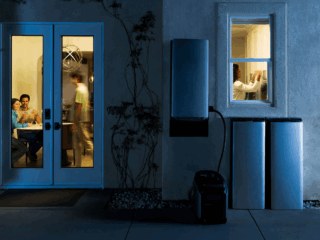
Modern electromagnetic testing demands precision and reliability. Anechoic chambers provide the controlled environments necessary for accurate measurements, free from external interference. These specialized rooms depend on advanced RF absorber materials to create the electromagnetic silence required for precise testing.
Among various absorber types, pyramidal absorbers have become the industry standard. Their distinctive shape and material composition deliver exceptional performance across multiple testing scenarios. The unique geometry of these absorbers creates optimal conditions for electromagnetic compatibility testing, antenna measurements, and microwave applications.
The Science Behind Pyramidal Absorber Design
Pyramidal absorbers begin with a foundation of open-cell polyurethane foam enhanced through volumetric loading with carbon and fire retardants. This specific combination creates materials with exceptional dielectric properties. The carbon loading provides the conductivity needed for effective electromagnetic energy absorption, while fire retardants ensure safety compliance in testing facilities.
The open-cell structure allows electromagnetic waves to penetrate deeply rather than reflecting off surfaces. This penetration capability distinguishes pyramidal absorbers from other types. The uniform distribution of carbon particles throughout the foam creates consistent absorption properties across the entire absorber structure.
Pyramid Geometry Advantages
The pyramid shape serves multiple functional purposes beyond aesthetics. This geometry creates a gradual impedance transition from air to the absorber material, significantly reducing interface reflections. The tapered profile guides electromagnetic waves through increasing amounts of absorber material from tip to base.
Surface area maximization occurs naturally through the pyramid design. When electromagnetic energy encounters the pyramid surface, multiple reflection points along the slanted sides create successive energy reduction cycles. This multi-reflection process continues until most electromagnetic energy converts to heat and dissipates safely.
Performance Characteristics That Set Pyramidal Absorbers Apart
Broadband Frequency Coverage
Pyramidal absorbers excel across wide frequency spectrums, making them versatile for diverse testing requirements. The pyramid height determines frequency response characteristics:
- Taller pyramids: Better absorption at lower frequencies
- Shorter pyramids: More effective at higher frequencies
- Scalable design: Customizable for specific frequency ranges
The quarter-wavelength principle guides pyramid height selection, where optimal height equals approximately one-quarter of the lowest frequency wavelength. However, the gradual taper enables effective absorption across broader frequency ranges than this principle alone would suggest.
Angular Performance Benefits
Excellent absorption occurs across various incident angles, making pyramidal absorbers ideal for multi-directional electromagnetic testing. The pyramid geometry naturally accommodates oblique incidence angles through effective side-wall absorption. This angular tolerance proves particularly valuable in chambers where perfect normal incidence cannot always be achieved.
Scattering effects enhance angular performance further. Oblique electromagnetic waves striking pyramid surfaces may scatter to adjacent pyramids, creating additional absorption opportunities. This scattering reduces the overall reflection coefficient of the absorber array, improving chamber performance.
Installation and Practical Benefits
Streamlined Installation Process
The regular geometric shape of pyramidal absorbers offers significant installation advantages. Uniform pyramid profiles allow efficient packing and arrangement on chamber surfaces. This regularity simplifies installation procedures and ensures consistent coverage across walls, ceilings, and floors.
Installation teams benefit from predictable dimensions and mounting requirements. The stable base of each pyramid provides secure mounting surfaces for adhesives or mechanical fasteners. This stability becomes particularly important in large anechoic chambers where absorber arrays may experience air movement from ventilation systems.
Maintenance and Durability
Pyramidal absorbers demonstrate excellent longevity when properly maintained in controlled environments. The carbon-loaded polyurethane foam construction resists physical damage while maintaining electromagnetic properties over extended periods. Environmental factors that may affect performance include:
- Physical compression: Can reduce absorption effectiveness
- Surface contamination: May alter electromagnetic properties
- Environmental changes: Temperature and humidity variations
Regular maintenance involves periodic inspection for damage, contamination, or compression. The pyramid shape facilitates visual inspection, as problems typically appear on exposed surfaces. Proper ventilation and environmental controls help prevent contamination and extend the life of the absorber.
Testing and Validation Methods
Reflection Coefficient Analysis
Performance evaluation of pyramidal absorbers relies on reflection coefficient measurements. These tests determine the absorber’s ability to reduce surface reflections using specialized antenna systems positioned at fixed distances from the absorber material. The resulting reflections are measured and compared to incoming signals to determine performance across different frequencies and angles.
Reflection coefficient testing provides quantitative performance data, allowing engineers to verify that pyramid-shaped absorbers meet specified requirements. These measurements occur in controlled environments using calibrated equipment for accurate and repeatable results.
Absorption Coefficient Testing
Absorption coefficient measurements focus on the pyramidal absorber’s ability to dissipate electromagnetic energy rather than simply reducing reflections. These tests determine how much incident energy is absorbed and converted to heat. The absorption coefficient becomes particularly important for applications requiring safe dissipation of high electromagnetic energy levels.
Testing procedures involve placing absorber material at different distances from antenna systems to evaluate performance across various frequencies and incident angles. This comprehensive approach ensures pyramidal absorbers perform effectively across the full range of expected operating conditions.
Industry Applications and Market Adoption
Electronics and Telecommunications Sector
Pyramidal absorbers find extensive use among manufacturers of electronic components and systems. Companies producing antennas, radar systems, and satellite communications equipment rely on anechoic chambers lined with pyramid-shaped absorbers for product testing without external interference.
Key applications include:
- Antenna pattern optimization: Ensuring optimal radiation characteristics
- EMC compliance testing: Meeting electromagnetic compatibility standards
- Multi-band device testing: Covering multiple frequency ranges simultaneously
Telecommunications equipment manufacturers use pyramidal absorbers to verify regulatory compliance and optimize antenna patterns. The consistent performance across different frequencies and angles ensures accurate and repeatable test results.
Government and Research Applications
Government agencies and research institutions utilize absorbers for evaluating sophisticated electromagnetic devices and systems. Military and aerospace applications often involve testing electronic systems that require the controlled environment provided by anechoic chambers equipped with pyramid-shaped absorbers.
Research institutions create precisely controlled electromagnetic environments for scientific studies and experimental work. The ability to achieve very low reflection levels with pyramidal absorbers enables accurate measurements and technology development without environmental interference.
Commercial Testing and Certification Services
Companies providing testing and certification services for electromagnetic devices depend on absorbers to maintain anechoic chamber performance. These service providers operate large chambers accommodating various devices and testing requirements. The versatility and consistent performance of pyramidal absorbers make them ideal for multi-purpose testing facilities.
Commercial testing requires absorber materials that maintain performance over extended periods and frequent use. Pyramid-shaped absorbers meet these requirements through their durable construction and stable electromagnetic properties, providing reliability for commercial testing facilities that serve clients over many years.
Design Considerations and Selection Criteria
Pyramid Height Selection Strategy
Appropriate pyramid height selection directly impacts pyramidal RF absorber performance. The pyramid height must match the frequency range of electromagnetic signals incident on the absorber material. Higher-frequency signals generally require shorter pyramid heights for effective absorption, while lower-frequency signals need taller pyramids for optimal performance.
The angle of incidence of incoming signals influences pyramid height selection. Absorbers with shorter pyramid heights typically perform better with signals arriving at low angles, while taller pyramids excel with signals incident at high angles. The expected range of incident angles in the anechoic chamber must be considered when selecting pyramid heights.
Environmental Factors
The installation environment has a significant impact on the pyramidal absorber’s long-term performance and durability. Temperature, humidity, and air quality all influence absorber materials and their electromagnetic properties. Proper environmental controls maintain consistent performance and extend the absorber’s useful life.
Ventilation systems in anechoic chambers require careful design to prevent contamination of pyramidal absorbers while maintaining necessary air circulation. The pyramid shape can collect dust and debris over time, potentially affecting performance if not properly managed. Regular cleaning and maintenance schedules ensure absorbers continue performing at specified levels throughout their service life.
In Summary
Pyramidal absorbers have established themselves as the industry standard for anechoic testing due to their superior performance, practical advantages, and proven reliability. Their unique pyramid geometry and engineered materials provide the broadband performance and high absorption efficiency required for accurate electromagnetic testing. The versatility of pyramid-shaped absorbers makes them suitable for applications ranging from basic EMC testing to sophisticated research and development projects.
The continued evolution of pyramidal absorber technology ensures these materials will remain at the forefront of anechoic testing solutions. As electromagnetic testing requirements become more demanding and complex, the proven performance characteristics of pyramidal absorbers provide the foundation for meeting these challenges. The combination of technical excellence and practical benefits establishes them as the clear choice for professional anechoic testing applications across industries.













